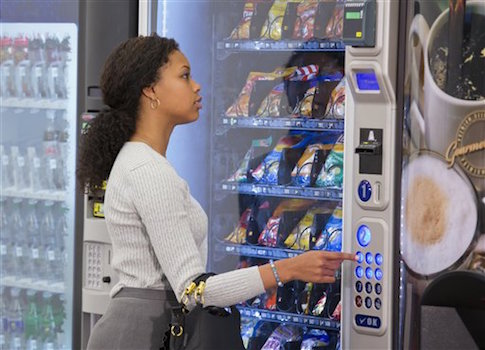The federal government formally completed regulations that will force vending machines and restaurants to display calorie information, which can lead to businesses being fined thousands of dollars for not including the number of calories in a mayonnaise packet.
The regulations, which originated in Obamacare, total 319 pages and will cost industry $1.7 billion to comply. The Food and Drug Administration (FDA) published the final rules last week just before the Thanksgiving holiday, arguing the rules are "an important step for public health."
Dan Goldbeck, a research analyst for the American Action Forum, documented that the rules are more costly than the administration originally anticipated, after expanding the number of restaurants and vending machine owners who must comply.
"These rules have always been a curious addition to the Affordable Care Act (ACA), as there’s no clear linkage to the law’s primary goal of health insurance reform," Goldbeck wrote. "Originally proposed in April 2011, the final versions have taken more than three years to find their way to the Federal Register."
The final rules increased costs by $542 million from the proposed rules, totaling $531.1 million for vending machines, and $1.2 billion for restaurants to change their menus. In addition, paperwork associated with the vending machine rule will take 1,507,788.5 hours to complete.
Costs are likely to be passed onto consumers, but the FDA believes Americans will be happy to pay more for additional nutrition information.
"We fully expect that some proportion of the costs imposed by the regulation will be passed on to consumers, who are generally willing to accept some degree of price increase in exchange for an increase in the nutrient content information of standard menu items," the FDA said in their Regulatory Impact Analysis on the menu rule in November.
The rules will apply to vending machine owners who operate at least 20 machines, and restaurant chains with 20 or more locations. An estimated 5.98 million vending machines, and 298,600 restaurants will be affected.
Goldbeck noted that restaurants and vending machines that do not properly label calorie counts could face a $1,000 fine due to "misbranding."
The restaurant rule, which goes into effect December 2015, gets into lengthy detail about what foods must be labeled. For instance, the FDA concluded that the rules will apply to a "pumpkin spice muffin available only in November," but not to crushed dried peppers, which are "considered a condiment that is exempt."
All standard menu items must have the number of "Calories" or "Cal" listed on every menu boards and menu, and a "succinct statement" on calories at the bottom of every menu page.
The FDA settled on the statement, "2,000 calories a day is used for general nutrition advice, but calorie needs vary," abiding by their principle that the "succinct statement should be succinct."
The government said the rule is flexible because it orders what size and where the calories must be displayed but "does not restrict the font style."
The FDA also allows restaurant owners to decide whether they want to use a comma for food items of 1,000 calories or more.
For fast food chains, the FDA even went into how a company will note calories for soft drinks depending on whether they have a "standard ice fill" for cups.
"If the covered establishment usually prepares and offers for sale a beverage using a standard beverage fill or dispenses a standard ice fill, the covered establishment must declare calories based on such standard beverage fill or standard ice fill," the final rule concluded.
Though initially exempt in the proposed rule, alcoholic beverages and condiments will have to have calories listed, unless the condiments are behind the counter.
The vending machine rule, which takes effect December 2016, is equally complex.
Owners are not allowed to display a single calorie range for items that can be customized. For instance, coffee machines must display calories for every type of combination, for options "skim milk, whole milk, cream, sugar, or sugar substitute." Slushie machines will have to display calorie counts for "each variety or flavor."
For machines that sell sandwiches, calories will have to include condiments if the packet comes with the sandwich, but not if condiments are stocked outside of the machine in a common area.
There was also a dispute over whether the rule should apply to only vending machines that have selection buttons, and bureaucrats struggled with a lack of congressional opinion, since the government only recently began regulating vending machines.
"The term ‘vending machine’ as used in section 403(q)(5)(H)(viii) is not specific as to whether it must have a selection button," the final rule said. "The scant legislative history does not shed any light on whether Congress intended to limit covered vending machines only to those with selection buttons by virtue of the statutory provision regarding the placement of the calorie declaration sign in close proximity to the selection button."
Nevertheless, the government decided that the rule would apply to "any machine regardless of whether it has a selection button."
The FDA decided that the rule would not apply to "game machines" that dispense candy, despite objections from one concerned commenter.
"The comment claimed that a consumer playing a claw game could still maneuver the claw toward a healthier option if the calorie declarations for food prizes were available," the final rule said.
